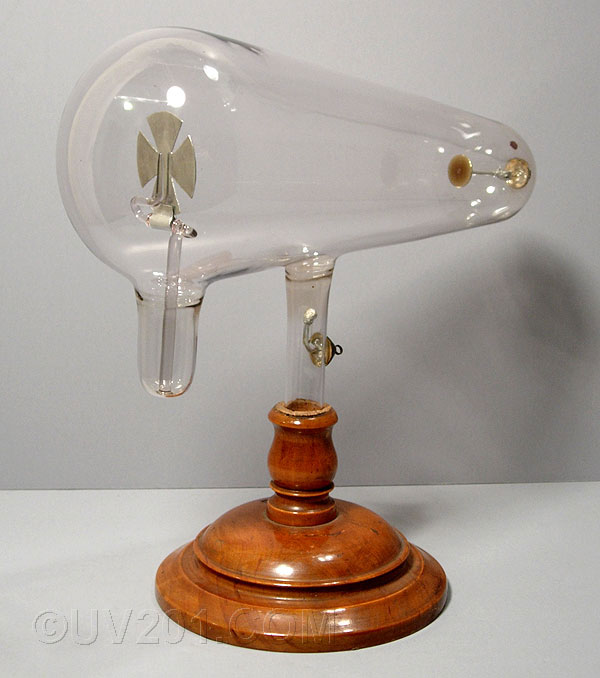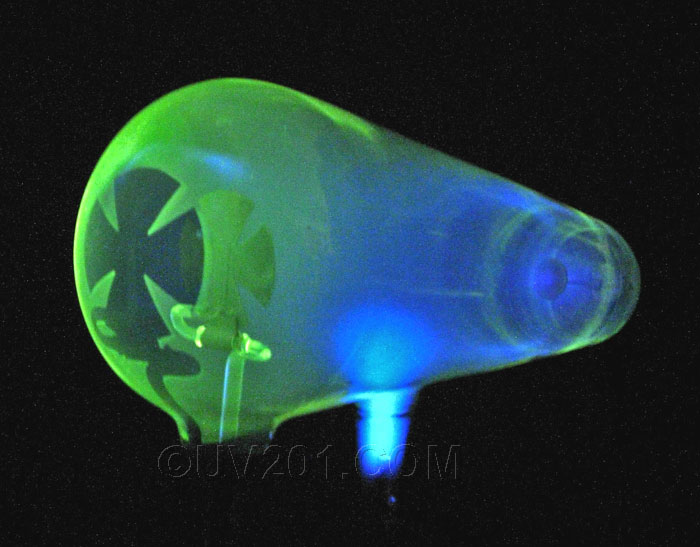|
Crookes Tube |
 |
| The Crookes tube was named
after the British chemist and physicist Sir William Crookes (1832-1919).
The Crookes tube is the predecessor of the cathode ray tube that made
television possible though its primary use is as a classroom
demonstration device. Like most items of this sort, it was made in
Germany. There is no way to establish a date, but it is probable
that it was made in the early part of the 20th century. It is
about 10 inches long, and 4 inches in diameter at the widest point.
The interior of the tube is evacuated, and when a
sufficiently high voltage is applied, a stream of electrons travel from
the cathode (the small end) toward the anode (at the center bottom of
the tube). |
 |